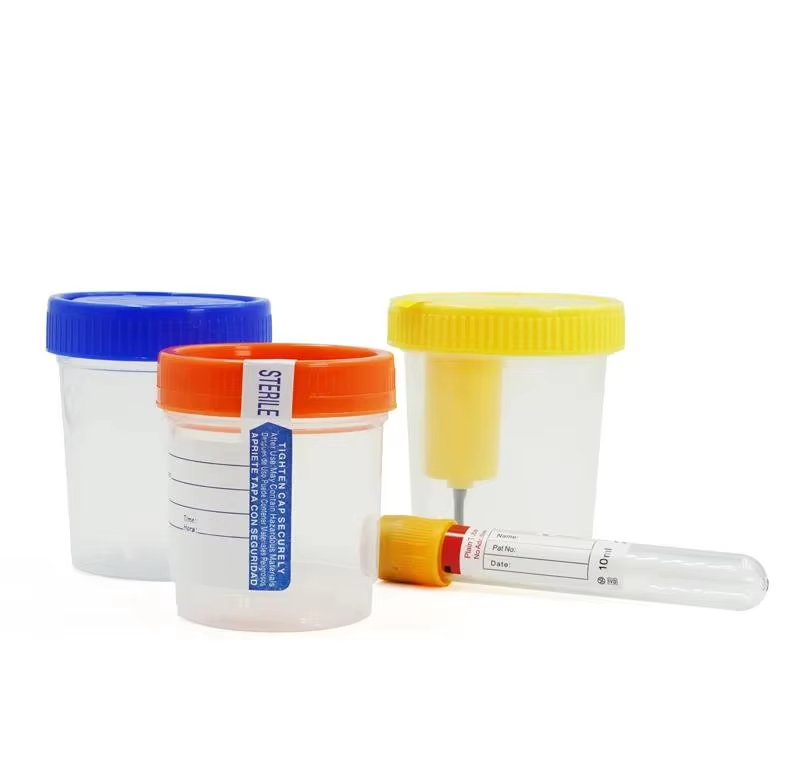The Growing Prevalence of Urine Collection Containers in Modern Healthcare
Over the last few years, hospitals and clinics worldwide have observed a significant surge in the usage of urine collection containers, a trend that aligns with several critical shifts in healthcare delivery. This rise directly correlates with the growing number of patients managing long-term health conditions, the expanded adoption of routine health screenings, and clinics’ renewed commitment to minimizing risks while enhancing patient care. These seemingly simple containers have quietly become indispensable tools in the lab testing supply chain, streamlining workflows, reducing processing delays, and ensuring the reliability of test results—all of which are vital for informed clinical decisions.
Design and Function: Supporting Every Stage of Lab Work
Urine collection containers are engineered to fulfill three core functions: collecting, storing, and safely transporting urine samples, each tailored to support the intricate steps of laboratory analysis. Available in a range of sizes—from small 50mL vials for specific chemical tests to larger 250mL containers for comprehensive urinalysis—and constructed from materials like polypropylene (known for its chemical resistance) or polyethylene (valued for its durability), these containers are designed to match precise testing needs. For example, pediatric clinics often use smaller, spill-proof containers with easy-grip surfaces, while reference labs handling high volumes of samples opt for stackable, standardized sizes to optimize storage space. As laboratories upgrade to advanced diagnostic equipment, such as automated urine analyzers, the demand for containers that integrate seamlessly with these systems—featuring uniform dimensions and compatible lids—has grown, further driving innovation in design.
Drivers Behind the Rising Demand
The increasing need for urine specimen containers stems from multiple healthcare trends, starting with the rising incidence of urinary tract infections (UTIs) and a broader spectrum of kidney-related disorders. The World Health Organization (WHO) identifies UTIs as among the most commonly reported infections globally, affecting millions annually, which underscores the urgency for fast, accurate lab testing. To meet this demand, healthcare facilities are prioritizing containers that preserve sample integrity, preventing contamination during transport and ensuring sterile handling until analysis is complete. Additionally, the expansion of chronic disease management—including conditions like diabetes, which requires regular urine glucose monitoring—has amplified the need for reliable, easy-to-use collection tools.
Home Health and Remote Testing: A New Frontier
The growth of home health care and point-of-care testing has emerged as a key driver, fueled by advancements in telehealth and remote patient monitoring. Today, patients can collect and send urine samples without direct clinician supervision, a shift that demands containers designed for both patient-friendliness and performance. These containers often feature intuitive, leak-proof lids that are easy to seal without specialized training, shatter-resistant materials to withstand shipping, and clear instructions printed directly on the surface. Such design elements ensure sample stability even when collected at home, maintaining the accuracy of lab results regardless of the collection environment.
Beyond Clinical Care: Roles in Research and Regulation
Urine specimen containers play a critical role beyond hospital and clinic settings, particularly in drug research and pharmaceutical development. Clinical trials, governed by strict regulatory standards (such as those set by the FDA and EMA), rely on these containers to collect urine samples for assessing drug efficacy, monitoring metabolism, and detecting adverse effects. The consistency of results from these samples is paramount, as data must be reliable and comparable across multiple trial sites. Manufacturers have responded by developing containers with features like tamper-evident seals and barcoded labels, which streamline tracking and ensure compliance with regulatory documentation requirements.
Innovations Shaping the Future
Manufacturers are continuously refining urine collection containers to address evolving healthcare needs. Recent innovations include tamper-proof lids that prevent accidental spills or tampering, barcoded labels for automated tracking (reducing manual errors), and prominently displayed biohazard warnings to enhance staff safety. These upgrades not only protect sample integrity but also reduce the need for manual handling, speeding up the journey from sample collection to result reporting. Sustainability is also emerging as a focus, with some companies introducing recyclable or biodegradable materials to align with healthcare facilities’ environmental goals.
Outlook: Sustained Growth in a Evolving Market
Looking ahead, the demand for urine collection containers in hospitals, outpatient clinics, and home-testing programs is poised to grow, mirroring the rise in chronic diseases, the expansion of home health services, and the ongoing need for reliable diagnostics. As healthcare systems prioritize early intervention and patient safety, the market for these containers will continue to expand, with opportunities for manufacturers that adapt to emerging trends—from automated lab integration to stricter regulatory standards and sustainability initiatives. In this landscape, urine collection containers will remain a quiet yet critical pillar of modern healthcare, supporting accurate diagnostics and informed patient care across the globe.

